Easy Whole Wheat Biscuits
These easy whole wheat biscuits are prepared with whole wheat pastry flour and tangy buttermilk, providing them with that classic flavor and an exceptionally fluffy texture.
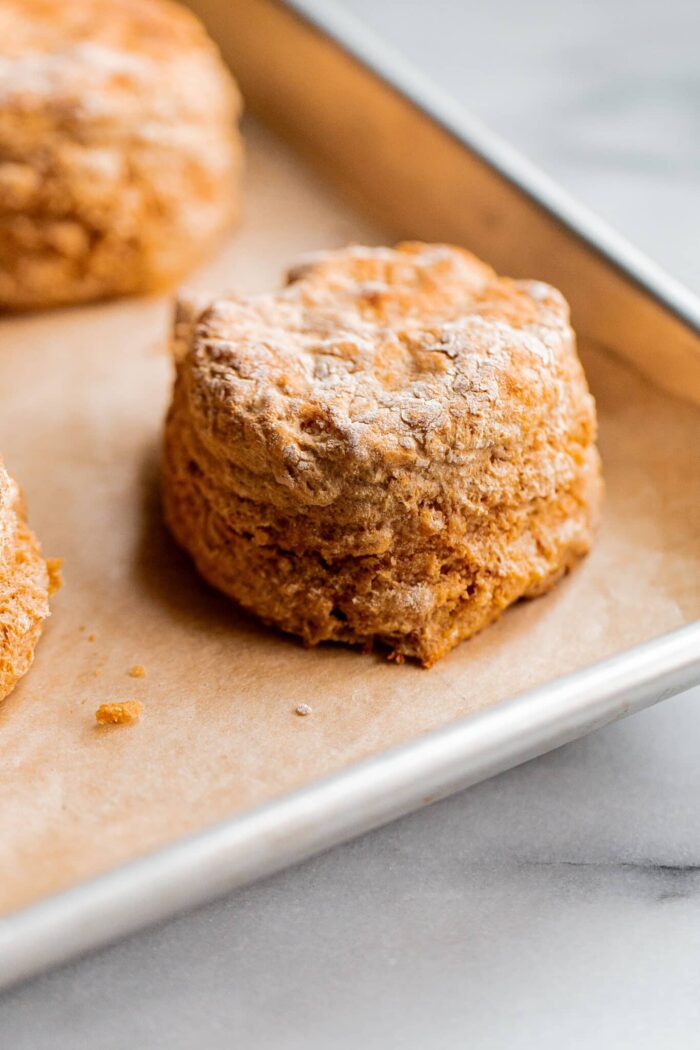
With a preparation time of less than 30 minutes, this whole wheat biscuit recipe is a great choice when you crave a quick and delicious accompaniment for breakfast, your favorite soups, or main courses.
You can prepare the dough and freeze cut-out biscuits, allowing you to bake them from frozen on a whim. There’s truly nothing better than filling your kitchen with the irresistible aroma of tangy, buttery biscuits at a moment’s notice.
I hope this becomes one of those cherished recipes that you make, love, commit to memory, and find yourself turning to time and time again, just as we have.
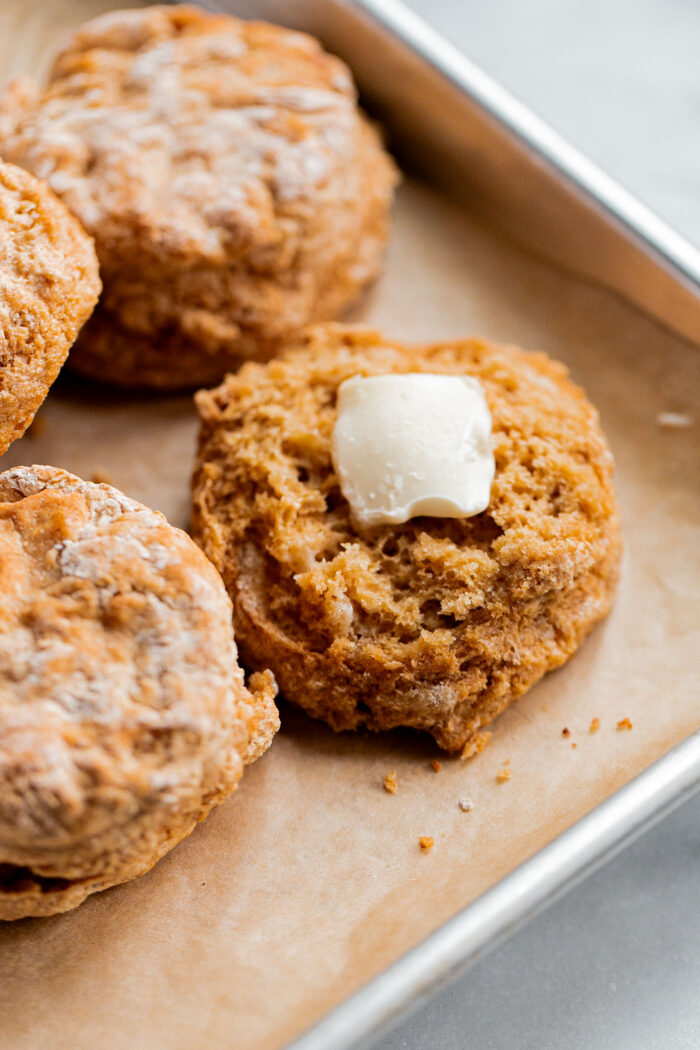
Why You’ll Love These Biscuits:
- Classic Flavor, Elevated: These whole wheat biscuits offer more flavor and a slightly elevated nutritional profile, all while maintaining that classic flavor and beloved texture.
- Light and Tender – This biscuit recipe defies expectations, demonstrating that whole wheat biscuits can be just as tall, light, and tender as their all-purpose counterparts.
- Easy to Make – These biscuits come together in less than 30 minutes, allowing you to make a batch whenever the moment or craving calls.
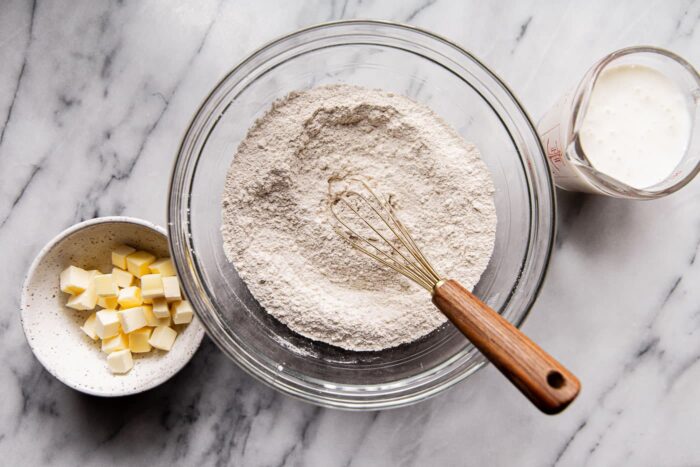
Whole Wheat Biscuit Ingredients:
- WHOLE WHEAT PASTRY FLOUR: milled from soft wheat, whole wheat pastry flour offers a lower protein content than traditional whole wheat flour and most all-purpose flours. It is my favorite secret ingredient, as it allows you to produce more nutritious and flavorful, yet tender whole grain biscuits. Here’s an article with more about baking flours and when to use them.
- BAKING POWDER: serving as the primary leavening agent, baking powder ensures a lofty rise during baking. Given the generous amount used in this recipe, opting for aluminum-free baking powder prevents any metallic aftertaste.
- BAKING SODA: a touch of baking soda helps balance the acidity of the buttermilk.
- SALT: added for flavor. I use and recommend Diamond Crystal Kosher Salt, my preference for cooking and baking. If using other brands, halve the quantity to account for higher density (read this article on cooking salts).
- UNSALTED BUTTER: cold butter is cut into the dry ingredients. These pockets of butter give the biscuits great flavor and also help with rise.
- BUTTERMILK: a classic ingredient in Southern biscuits, buttermilk provides moisture and that signature aroma and tangy flavor. I don’t recommend substitutions for this application.
For the full recipe and instructions, see recipe box below.
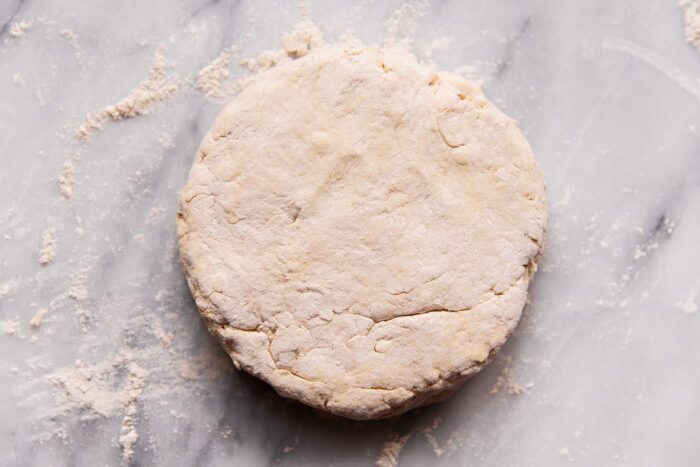
How to Make Whole Wheat Biscuits:
Like other pastries, biscuits are prepared using cold ingredients and minimally handled. This ensures a tender texture and good rise during baking.
- Preheat the oven to 450ºF (230°C). Line a sheet pan with parchment paper or a silicone baking mat. Set aside.
- In a medium bowl, whisk together the whole wheat pastry flour, baking powder, baking soda, and salt. Add the cold butter and toss in the flour mixture. Using a pastry cutter, cut the butter into flour until it is pea-sized. Set the bowl in the freezer for 5 minutes to chill.
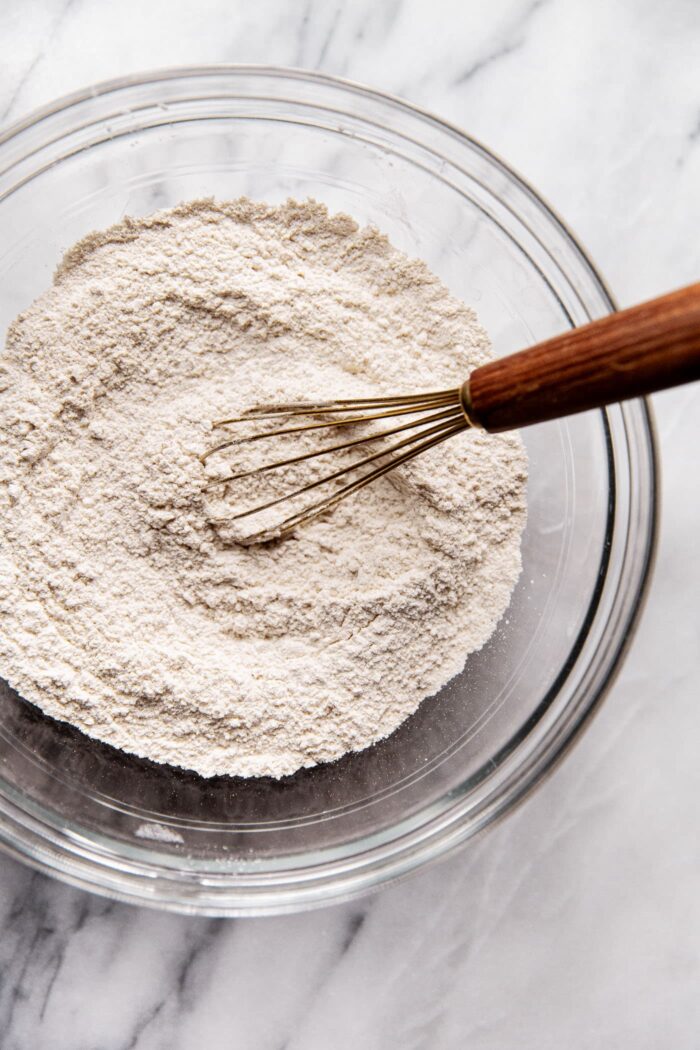
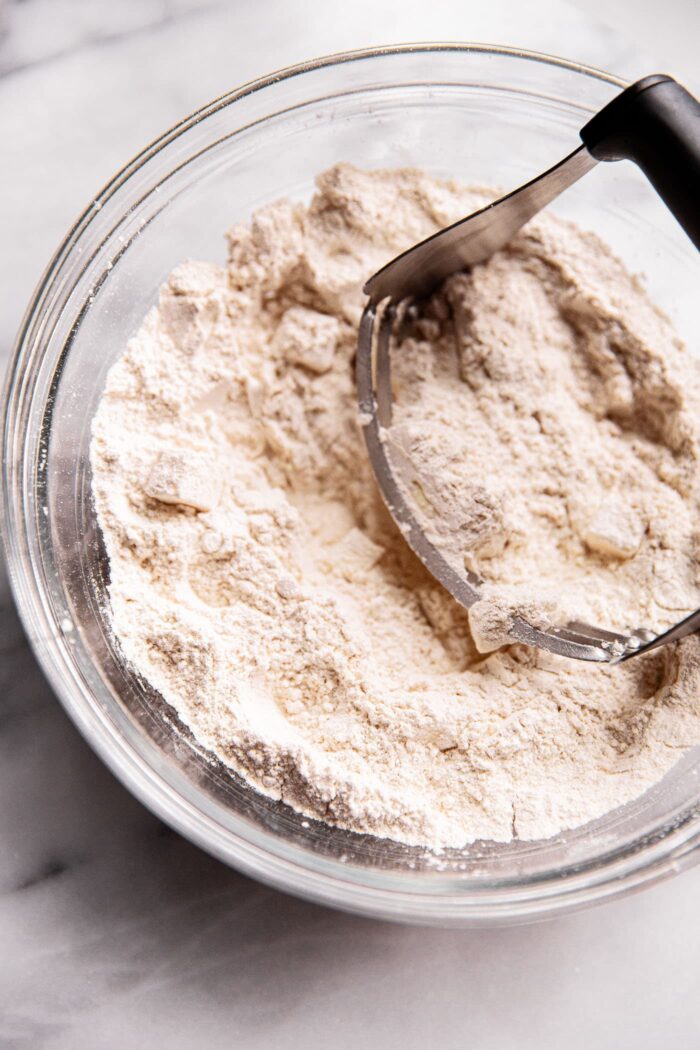
- Create a well in the center of the dry ingredients and add the cold buttermilk. Using a wooden spoon, stir the buttermilk into the flour mixture until just absorbed. The dough will seem wet, don’t worry.
- Transfer the dough to a floured countertop. Knead and fold over the dough over itself several times until it comes together, dusting the dough with flour as needed to prevent it from sticking to the countertop.
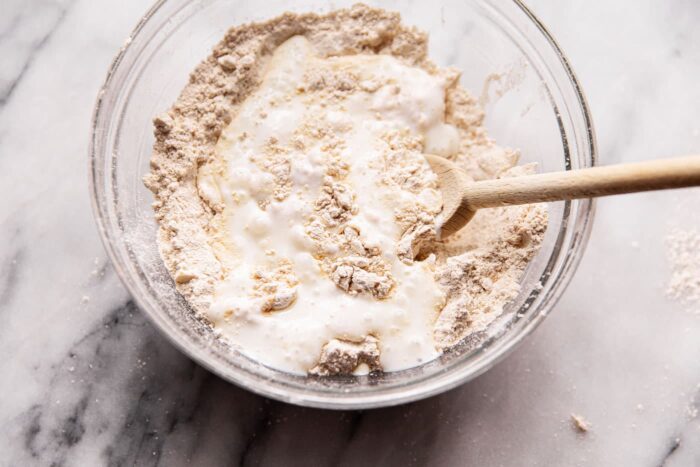
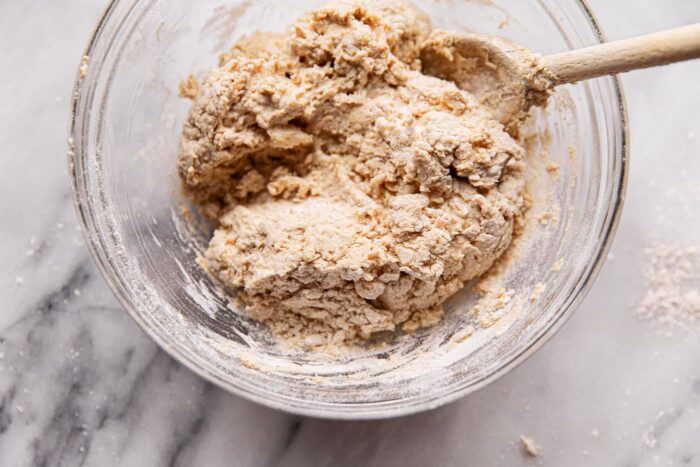
- Pat the dough with your hands into a disc that is roughly 1-inch thick. The dough should be cold, soft, and supple. Dip a 2.5-inch biscuit cutter in flour and proceed to cut out the biscuits. Be sure not twist the biscuit cutter. This seals the edges and prevents the biscuits from rising evenly during baking. Transfer the biscuits to the lined sheet pan, setting them apart by at least an inch. Gently press and knead any remaining dough and repeat; this recipe yields roughly 6-7 biscuits.
- Bake until lightly golden, about 9 to 11 minutes. Transfer to a wire rack. Biscuits are best served hot, split down the center, and topped with a generous pat of butter.

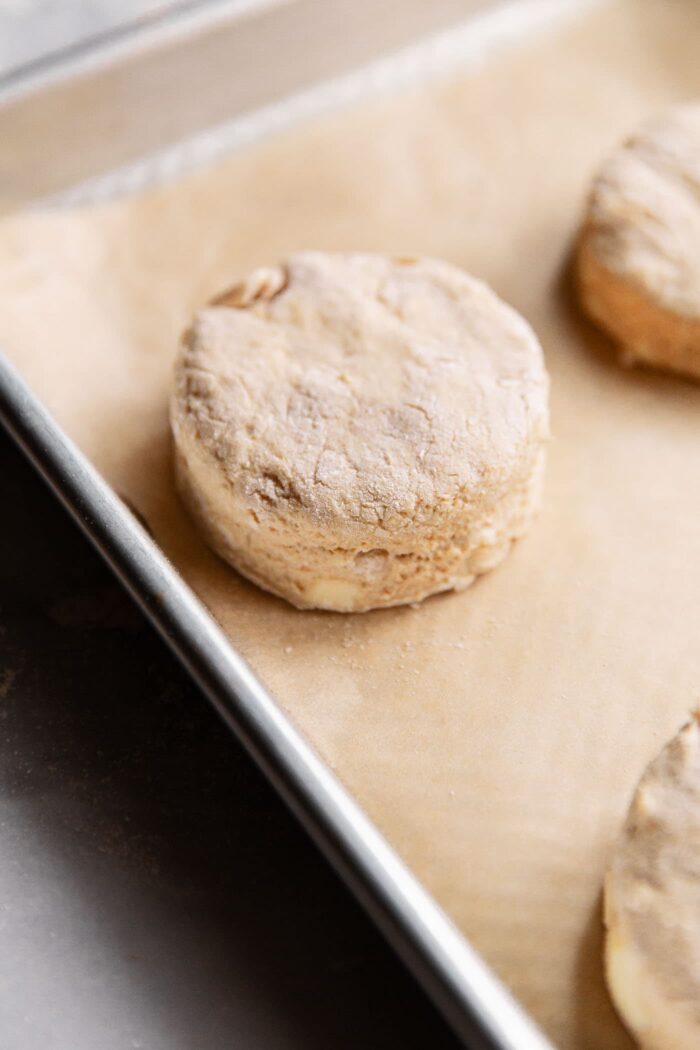
Make-Ahead Instructions:
- FREEZING INSTRUCTIONS: Prepare the biscuit dough and cut out the biscuits. Place on a parchment-lined plate or pan and set in the freezer until solid. Transfer frozen biscuits to a large Ziplock bag, excess air squeezed out and sealed well. Freeze for up to a month.
- HOW TO BAKE FROZEN BISCUITS: Preheat the oven to 450ºF (230°C). Place frozen biscuits on a parchment-lined sheet pan. Bake until golden, about 10 to 12 minutes. Serve hot out of the oven.
- WARMING INSTRUCTIONS: Leftover baked biscuits can be warmed in a toaster oven or split and warmed, cut-side down, in a preheated and buttered cast-iron skillet.
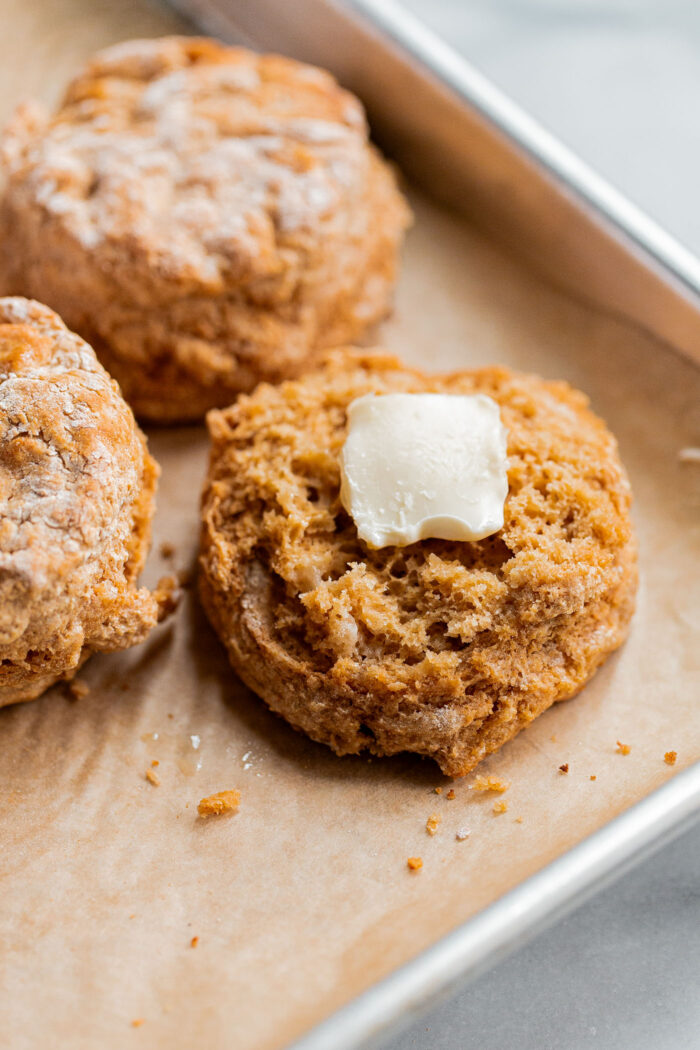
More Whole Wheat Recipes to Try:
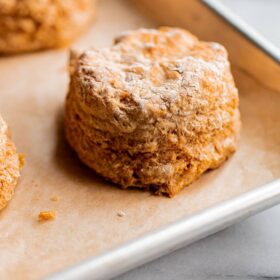
Easy Whole Wheat Biscuits
Equipment
- 2.5 Inch Biscuit Cutter
Ingredients
- 2 cups (240g) whole wheat pastry flour plus more for dusting
- 1 tablespoon (15g) aluminum-free baking powder see note section
- 1 teaspoon (6g) baking soda
- 1 teaspoon (3g) kosher salt
- 4 tablespoons (2 oz; 56g;) cold unsalted butter cut into ½-inch cubes
- 1 cup (236 mL) cold buttermilk
Instructions
- Preheat the oven to 450°F (230°C) with a rack in the center position. Line a sheet pan with parchment paper or a silicone baking mat. Set aside.
- In a medium bowl, whisk together the whole wheat pastry flour, baking powder, baking soda, and salt. Add the cold cubed butter and toss in the flour mixture. Using a pastry cutter, cut the butter into the flour mixture until the butter is pea-sized. Place the bowl in the freezer for 5 minutes to chill.
- Remove the flour mixture from the freezer and create a well in the center of the dry ingredients. Add the cold buttermilk. Using a wooden spoon, stir the buttermilk into the flour mixture until just absorbed. The dough will seem wet, don't worry.
- Transfer the dough to a floured countertop. Knead and fold over the dough over itself several times until it comes together, dusting the dough with flour as needed to prevent it from sticking to the countertop.
- Pat the dough with your hands into a disc that is roughly 1-inch thick. The dough should be cold, soft, and supple. Dip a 2.5-inch biscuit cutter in flour and proceed to cut out without twisting the biscuit cutter. If you twist the cutter, you wil seals the edges of each biscuit and this will not rise as tall or evenly during baking. Transfer the biscuits to the lined sheet pan, setting them apart by at least an inch. Gently press and knead any remaining dough and repeat; this recipe yields roughly 6-7 large biscuits.
- Bake until lightly golden, about 9 to 11 minutes. Transfer to a wire rack. Biscuits are best served hot, split down the center, and topped with a generous pat of butter.
Tips for Success:
- Given the generous amount used in this recipe, opting for aluminum-free baking powder prevents any metallic aftertaste.
- These biscuits can be adapted in several ways. Feel free to substitute half of the whole wheat pastry flour with regular all-purpose flour – this will produce even taller biscuits!
- It is important to use very cold ingredients when working with biscuit dough. Try to avoid over-working if at all possible, as this will affect the rise and texture of the biscuits.
Make-Ahead Instructions
- FREEZING INSTRUCTIONS: Prepare the biscuit dough and cut out the biscuits. Place on a parchment-lined plate or pan and set in the freezer until solid. Transfer frozen biscuits to a large Ziplock bag, excess air squeezed out and sealed well. Freeze for up to a month.
- HOW TO BAKE FROZEN BISCUITS: Preheat the oven to 450ºF (230°C). Place frozen biscuits on a parchment-lined sheet pan. Bake until golden, about 10 to 12 minutes. Serve hot out of the oven.
- WARMING INSTRUCTIONS: Leftover baked biscuits can be warmed in a toaster oven or split and warmed, cut-side down, in a preheated and buttered cast-iron skillet.

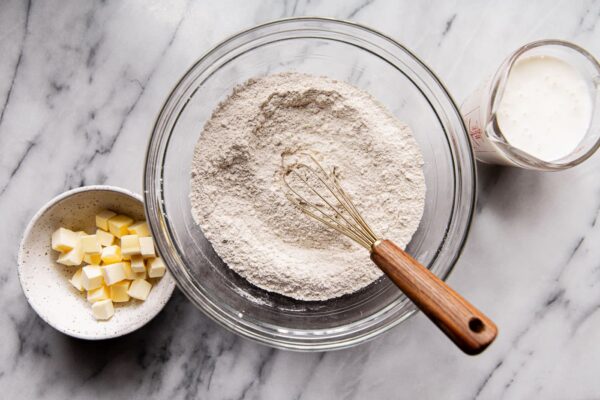
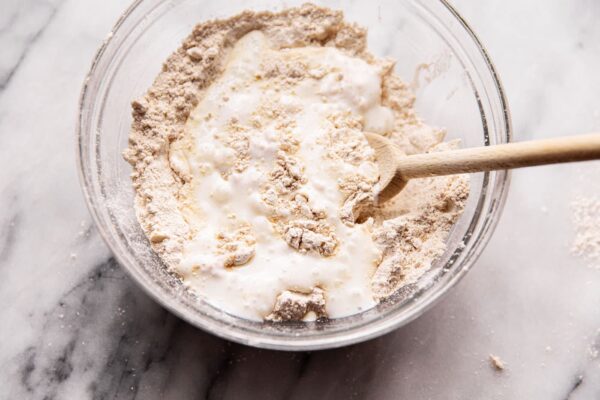
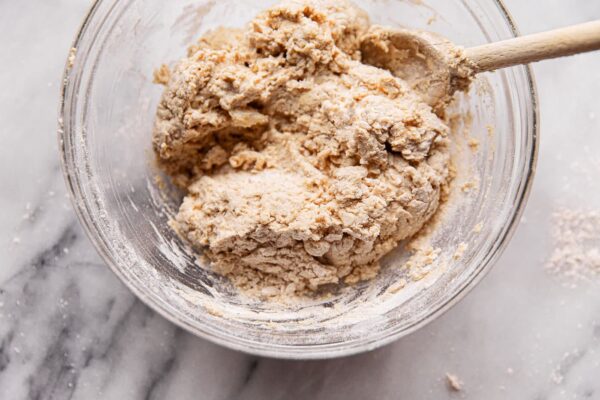
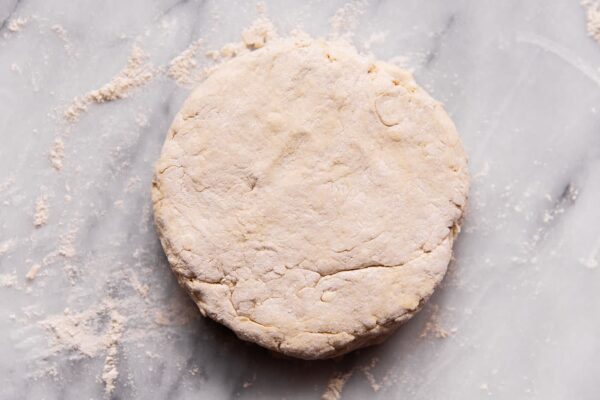
36 Comments on “Easy Whole Wheat Biscuits”
These biscuits look absolutely delightful! I love how you’ve elevated a classic with whole wheat pastry flour and buttermilk while keeping that fluffy, tender texture. The make-ahead freezing tip is genius for busy mornings—nothing beats fresh-baked biscuits on demand!
I’m curious if you’ve experimented with gluten-free or lactose-free alternatives for readers with dietary restrictions? For instance, could a gluten-free flour blend (like oat or almond flour) work here, or would it compromise the rise? And for lactose intolerance, might plant-based buttermilk (e.g., almond milk + lemon juice) be a viable substitute? I’d love to hear your insights or any tweaks you’d recommend!
Thanks for sharing such a thoughtful, versatile recipe—it’s clear this will become a staple in many kitchens!
A great recipe! These are fluffy and taste good. I especially appreciate the instructions for freezing and baking as needed. I added more buttermilk to get to “damp”. Used frozen butter and refrigerated flour, so that may have required the extra half cup liquid. Yummy!
Thanks, these were great! I was looking for buttermilk recipe with whole wheat pastry flour and kept finding recipes without the baking soda, which I thought was a part of the leavening action when you use buttermilk. I was excited to find yours!
I added one more tablespoon butter to make it closer to my usual biscuit recipe. Other than that, I stayed true to your original and it turned out great.
I’m pregnant and hungry all the time and I’ve been craving breakfast sandwiches every morning! I added sausage, egg, arugula, white cheddar, and avocado! And then I had a second biscuit with strawberry jam.
Thanks again!
I was looking for a whole wheat biscuit recipe and these were delicious! Highly recommend. The dough is wet but do not fear.
Excellent biscuits!! My mom and I made them with the red mill stone ground whole wheat flour as we didn’t have the pastry one in hand and we also made our own buttermilk (whole milk and vinegar)
They were so delicious, soft and fluffy!!! They taste amazing with avocado!!
That’s wonderful to hear! Thanks for taking the time to leave a review!
Delicious! I followed the recipe with no changes and promptly ate two when they came out of the oven. This is my first experience with whole wheat pastry flour and I appreciated your explanation of how it’s different from regular whole wheat flour. I’ll be making these biscuits again!
Can I substitute heavy cream for the buttermilk?
You could try doing the buttermilk hack, but no, it would affect the leavening as buttermilk has acid / cream does not. I don’t recommend that substitute for this recipe, as it would yield more of a scone than a biscuit (and again, the leavening would need adjustment).
Made this recipe and I would halve the salt.
Hi Nuny! I use Diamond Crystal kosher salt for all of my recipes – other brands of salt will vary dramatically in density and could result in recipes tasting too “salty”.
Hi there, can you advise a substitute for buttermilk?
Thanks
Typically some yogurt thinned with milk or milk (with some lemon juice) is the best substitute, but for something like biscuits where the consistency and ingredients are few, I really don’t recommend making this substitute!
I didn’t have any buttermilk on hand so I just made my own and these still turned out amazing. I just put butter on them straight from the oven but some apple butter or honey would have been even better. This is my go to recipe for biscuits from now on ❤
Excellent biscuits. we enjoyed them! love using whole wheat pastry flour!
I would love to try this recipe, but I don’t have whole wheat pastry flour. I do have white whole wheat flour. Can I substitute white whole wheat flour for the whole wheat pastry flour. If I have to use some all purpose flour, instead of all white whole wheat flour, can you tell me how much of each flour I should use. Thank you.
You could substitute white whole wheat, but you’d be better off using all purpose – as white whole wheat has a higher protein percentage and it can yield tougher biscuits. Pastry flour is preferred because it’s lower in protein than regular all purpose. You can substitute equal parts all purpose for pastry flour. Hope this helps!
Hey, thanks for the great recipe! I recently received a NutriMill Plus grain mill and milled soft wheat pastry flour that I used to make the biscuits. They were soooo good! I’m really making an effort to go whole grain as much as I possibly can and I love biscuits, but I never imagined that I would like whole wheat biscuits.
Pingback: Healthy Chicken or Turkey Pot Pie Soup Recipe
Can you do say one cup pastry/cake flour and one cup whole wheat? Well I will let you know in a minute actually!! Stay tuned…
A little less flaky but one thing it did do with the denser flour was held pockets of butter which melted with each bite that had one. They were not bad for a gray mid term election day and made great use of the remaining buttermilk and cake flour that I and from my sons birthday butter yellow cake. Thanks for the general guide on the recipe it was yummy!! I am usually intimidated by kneading or rolling recipes. I love to bake and I am pretty good at it if I do say so myself so I need to get out of my comfort zone and try things that intimidate me…This was one step in that direction! Delicious everyone try this for sure quicker than you would expect and waaay better than any canned biscuit!!
Oh My Goodness! These are the best whole wheat biscuits ever! All I had that was whole wheat was pastry flour so my search led me here and I am so thankful. As the recipe says, my dough was very wet (and it was raining outside) so I added a little more flour, probably 1/4 C – a couple of Tbs at a time. But they came out light and fluffy and delicious! – not at all like the door stops I’ve made in the past. This one’s a keeper!
Pingback: Function of Flour in Baking, Differences in Varieties of Flour | Baker Bettie
I need a biscuit recipe with as low of sodium as possible! Can you help me? My brother has liver failure and can’t have much sodium but loves biscuits. Thanks in advance
Hi Penny, feel free to just reduce the salt as much as you want from any biscuit recipe (this one or others!) to fit your brother’s dietary needs – it doesn’t play a structural role in this type of baked good. Hope this helps!
Thanks
These sound amazing! Thank you for health-ifying one of my favorite foods! 🙂
I was also curious, what background are you using in the first photo? I love it!
I love biscuits. These look yummy!
Pingback: The Weekly Gather - April 15 - Gathering Green
Pingback: Friday Link Love - Two Places at Once
Biscuits make me happy… and these look divine! Yup, these are in my breakfast future!
Yum! Maybe I can convince your oldest sister to make these this weekend! If not, making these when I get home! Yes, I think whole wheat pastry flour is wonderful!
Biscuits are the beeeeeeeest!
YEAHHH! Biscuits for the win!! Thee loook amaizing! Perfect for a lazy Sunday morning! 🙂
Love these biscuits!!!! So yummy. I freeze them and then warm them up in the toaster oven when I want one.
YUM. I love biscuits and am always looking for EASY. Happy weekend!
I love all kinds of biscuits, will try these out 🙂 Thanks for the great recipe!